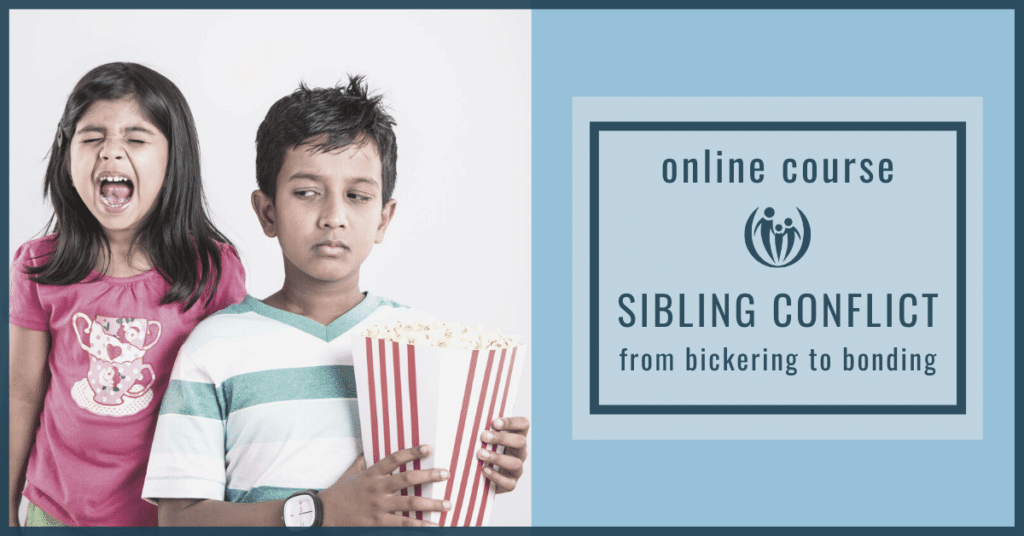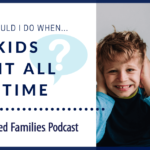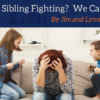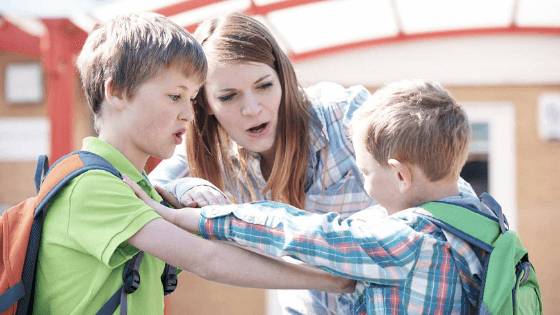
Two Questions That Defuse Almost Any Conflict
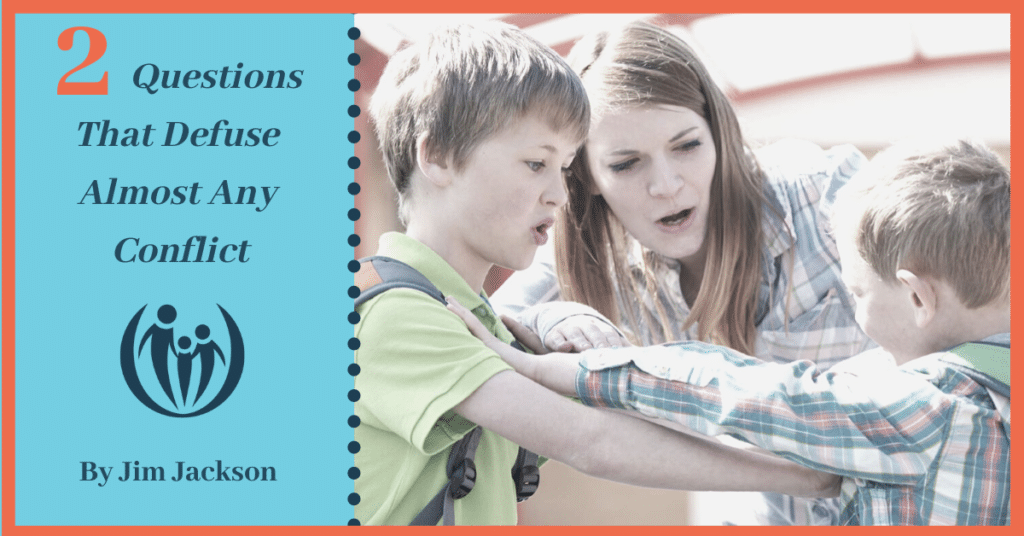
After working with parents for over twenty years we have learned that there are two critical questions that help guide children toward wisdom. The problem is that parents are so focused on stopping the problem that they frequently miss the opportunity to ask these questions.
Does this sound familiar?
You hear your kids squabbling and sense it’s getting out of control. You round the corner and loudly pronounce, “Stop it! You know better than that! Go to time out until you can say you’re sorry.”
This response is completely normal. The kids may settle down and say they’re sorry. And the parent will think their method worked. But that approach doesn’t build wisdom about relationships. Mentoring wisdom when our kids are fighting means helping them be more aware of how their actions affect others, and guiding them toward solutions that work for everyone. This vital process equips them to treat others with empathy and respect.
To build wisdom and empathy in relationships we invite parents, instead of taking over and making the conflict simply stop, to ask TWO questions when kids are in conflict.
- “What’s going on?”
- “How would you like to solve this?”
“What’s going on?”
If asked calmly and sincerely, this question can help kids learn to use their frontal lobes instead of their brain’s self-protection centers. At first, kids will likely point fingers of blame and make selfish accusations. But as you listen, repeat back to them what you hear. Ask your kids to do the same (listen and repeat) and they can then begin to hear other perspectives. You can help your kids understand that what’s going on is not just about external circumstances but about the thoughts and feelings of both parties.
Here’s how it might go:
As you calmly, confidently ask the question, “What’s going on?” they may answer or they may not. If not, what you do next will help them decide if you are just a third combatant, or a helpful guide. Slowly take a deep breath, consciously relax your face, and ask again, “What’s going on?”
They may launch into it simultaneously, “He did this!” “She did that!” “He’s stupid!” “I hate her!” and so on. Instead of a default controlling response from you, stay confidently calm as you listen. (So hard, I know!) Then, to help the kids learn to process more logically, simply give your answer to the same question.
“I can see that what’s going on here is two upset kids who want their way. Am I right?” This calm approach invites your kids to calm down too. Even though the fight may resume, it’s with a little less intensity, almost as if the kids are saying, “We’d do this differently if we knew how.” Simply objectively and empathetically restate your answer to the question of what’s going on, “Wow! A lot of energy in the room. Something seems really important.”

The kids now sense you are for them, not against them. You’re not taking sides. You ask once more, “So what’s really going on here?” The children each explain their point of view as you moderate to help them. You ask them to repeat what they’ve heard the other person say. You then might express your perspective about what you see going on. “You both have really strong, creative ideas about how to use this toy, and it’s hard to figure out a plan.”
When it’s natural add the statement, “It seems like you two are understanding each other better now.” This will queue up the next question.
“How would you like to solve this?”
There is no one right answer to this question. The goal is to enlist their thinking, hear their ideas, and support them in resolving it wisely. You can even ask it with a compassionate twist – How would you like to solve this in a way you both feel cared about? This keeps the discussion about kindness for all, not the rabbit trail of exact fairness.
When this approach is new they’ll likely answer the second question by saying, “I don’t know.” That’s OK! Affirm them for not making something up just to stay out of trouble. Ask if they’d like to think about it for a while, or if they’d like some ideas. If they stay stuck, have some fun with it and give some whacky ideas. Don’t just give the “right” answer, but give viable options and then ask them which seems best to them. Now you’re engaging their brains in resolving the problem on their own. You’re teaching wisdom.
Once they answer the question, “How would you like to solve this?” ask them what their plan is to make it happen and then, when appropriate, affirm their decisions.
As parents, there are fewer things more rewarding than growing wisdom in our kids through thoughtful questions. When kids can answer and respectfully act on their responses to these two questions – “What’s going on?”, and “How would you like to solve this?” they’ll be equipped for a lifetime of insight and problem-solving.
This seems like a lot. We know. It would be so much easier to just yell, “Stop it!”, dole out some consequences, and walk away. However, by just taking a deep breath, and entering into the situation with these two questions in mind, we think you’ll find it often defuses the conflict just as quickly. It will also teach kids to work together to solve a problem and, best of all, it encourages them to listen to the perspectives of others while doing it.
Give it a try and let us know how it goes!
In our Sibling Conflict online course we teach parents how to teach their kids the four steps of The Peace Process. Whether you have constant sibling battles in your home or you want to lay a strong foundation of reconciliation, enroll in the course! You’ll be helping your kids build a lifetime of healthy conflict resolution.
